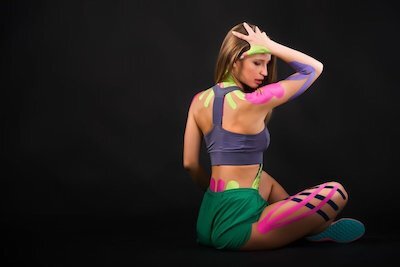Morton’s Neuroma Specialist in NYC
According To Dr. Nelya Lobkova
Pain in the ball of the foot is commonly attributed to a condition called Morton’s neuroma, which is the inflammation and scarring around a nerve root between the toes due to nerve compression. Morton’s neuroma specifically involves the third and fourth toes and this location is anatomically most common, however a neuroma can form between any toes. Causes for neuroma range from ill-fitted shoes, changes in gait or running form, and genetic predisposition. This condition is as prevalent in athletes as it is in women and men who wear tight-fitted dress shoes. Pain in the ball of the foot can be caused by a variety of conditions with mutual symptoms. Book a visit with NYC's top Podiatrist and morton's neuroma specialist, Dr. Nelya Lobkova at Step Up Footcare in our TriBeCa Downtown NYC location to have your morton's neuroma expertly treated.
What are the symptoms of Morton’s Neuroma?
Symptoms of a neuroma usually include but are not limited to: pain, burning, tingling, numbness, and an atypical sensation between the toes or in the ball of the foot. These symptoms may arise at rest or during activity depending on causes, activity level, and footwear. Some people describe the feeling as though they are stepping on a pebble or have a bunched up sock under their toes.
How do I know if my pain is due to neuroma?
Once symptoms of a neuroma arise, it is important to seek professional help right away. If pain or other symptoms linger, the size of the neuroma can increase making it more difficult to treat with non-invasive treatment. In order to differentiate the cause for pain in the ball of the foot diagnostic Ultrasound and 3D gait analysis may be performed by Dr. Lobkova at Step Up Footcare.
Should walking barefoot with a neuroma be avoided?
The inflamed and scarred nerve tissue in a neuroma is anatomically situated closer to the bottom of the foot. Thus walking barefoot, without a cushioned sole, leads to more inflammation and pain. At the same time, it is important to assess the width of shoes as they may be exacerbating the neuroma if they are narrower than the width of the foot. Bunions and bunionettes, which contribute to a wider foot-type may indirectly cause or worsen Morton’s neuroma.
How is Morton’s neuroma treated?
Morton’s neuroma can be treated by an array of conservative non-invasive or minimally invasive therapies. These solo or combination therapies include:
Custom Orthotics: Custom Orthotics made specially for your foot and Morton’s Neuroma repositions the bones in the foot to offload the pressure on the nerve.
Injections: One or more medicated steroid B12 injections which act to reduce inflammation resulting in pain relief or alcohol sclerosing injections to induce nerve degeneration and or destruction.
Advanced Laser Therapy: Laser Therapy stimulates the body’s own ability to restore function, reduce swelling, inflammation and pain in the foot and ankle.
Adjustment in Footwear: It is important to assess the width of shoes as they may be exacerbating the neuroma if they are narrower than the width of the foot.
Surgery: As a last resort a neurectomy, which involves excising the affected nerve, can be performed.
Learn more about each of the services by clicking on their respective tile.







